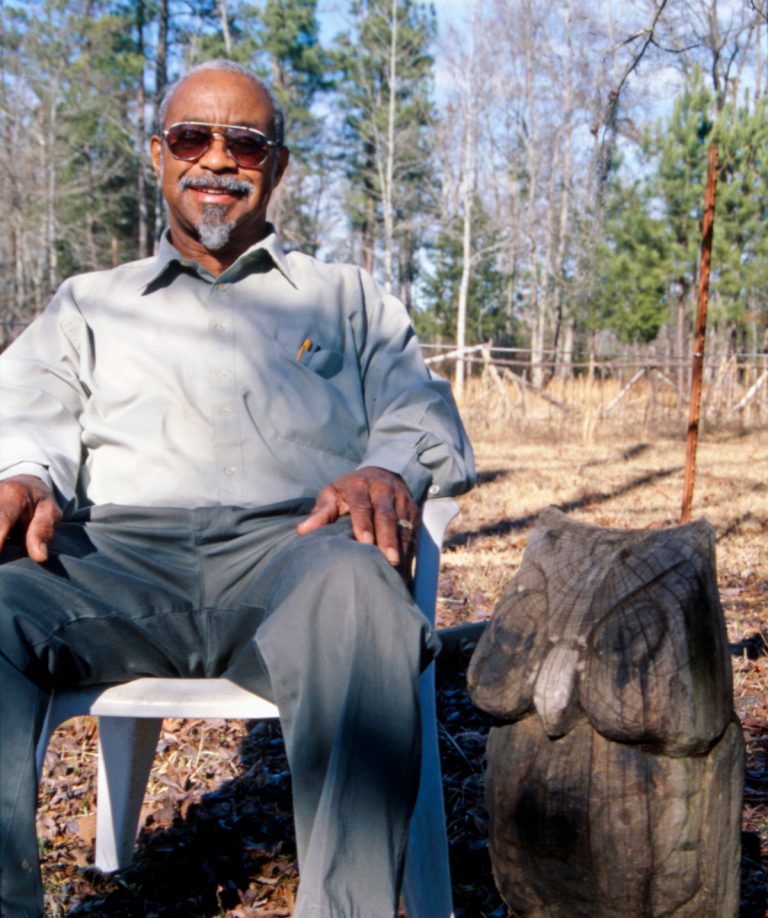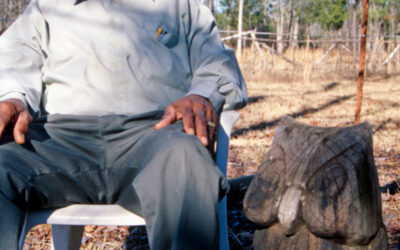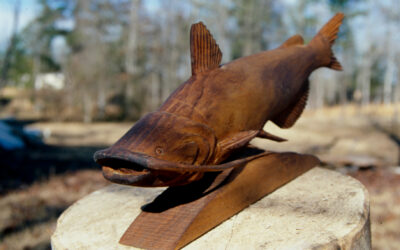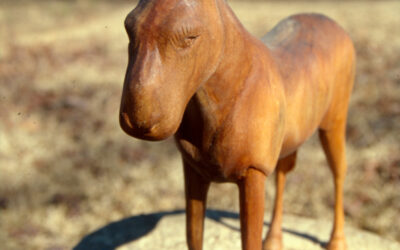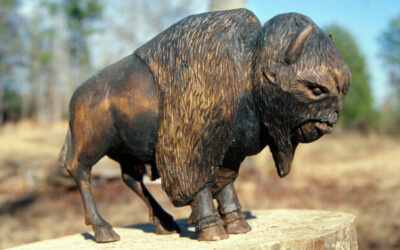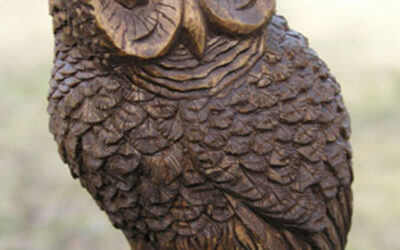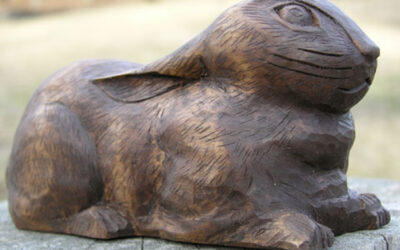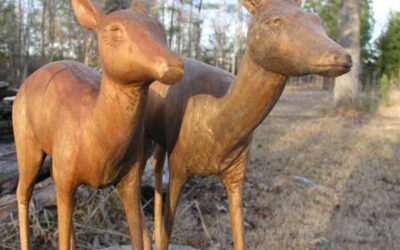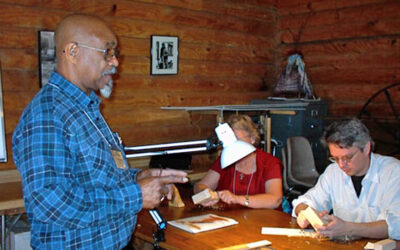George Berry was born in Oklahoma at White Oak Indian Hills, a Cherokee Indian village. His father was a carpenter and made utilitarian objects (like ax handles) in his spare time. He started his son out in carving by the age of seven. Berry started out by making simple toys and carvings of animals that he was around growing up on a farm. Later on, as a young father, Berry began teaching carving to neighborhood children.
During the early 1970s, two of his children had been attending the Piney Woods School in southwestern Rankin County. His carvings and work with children came to the attention of the school’s founder, Dr. Laurence Jones. Jones invited him to join the staff. Berry moved his family to Mississippi in 1972 and taught industrial arts at Piney Woods until he retired in 1984.
Wildlife was the primary subject of Berry’s work. He created carvings of a wide range of animals, including many that are important to Mississippi’s culture, like hunting dogs, catfish, and mules. He used no tools in his work other than a pocketknife in creating his work and rarely painted his pieces, usually adding only a coat of stain or sealer to them. Berry used a variety of woods in his work, but preferred walnut, cherry, and basswood.
Berry was very active in teaching others his artform. He frequently taught classes through the Craftsmen’s Guild of Mississippi (where he was a charter member), as well as demonstrating and leading workshops at local schools. He also taught at the renowned John C. Campbell Folk School in Brasstown, North Carolina.
Berry was a recipient of the Arts Commission’s Folk Arts Fellowship in 1999 and received an Artist Achievement Award through the Governor’s Arts Awards program in 2001. In October 2013, a gallery in the Mississippi Crafts Center was named in Berry’s honor.
Berry died on March 24, 2014.

